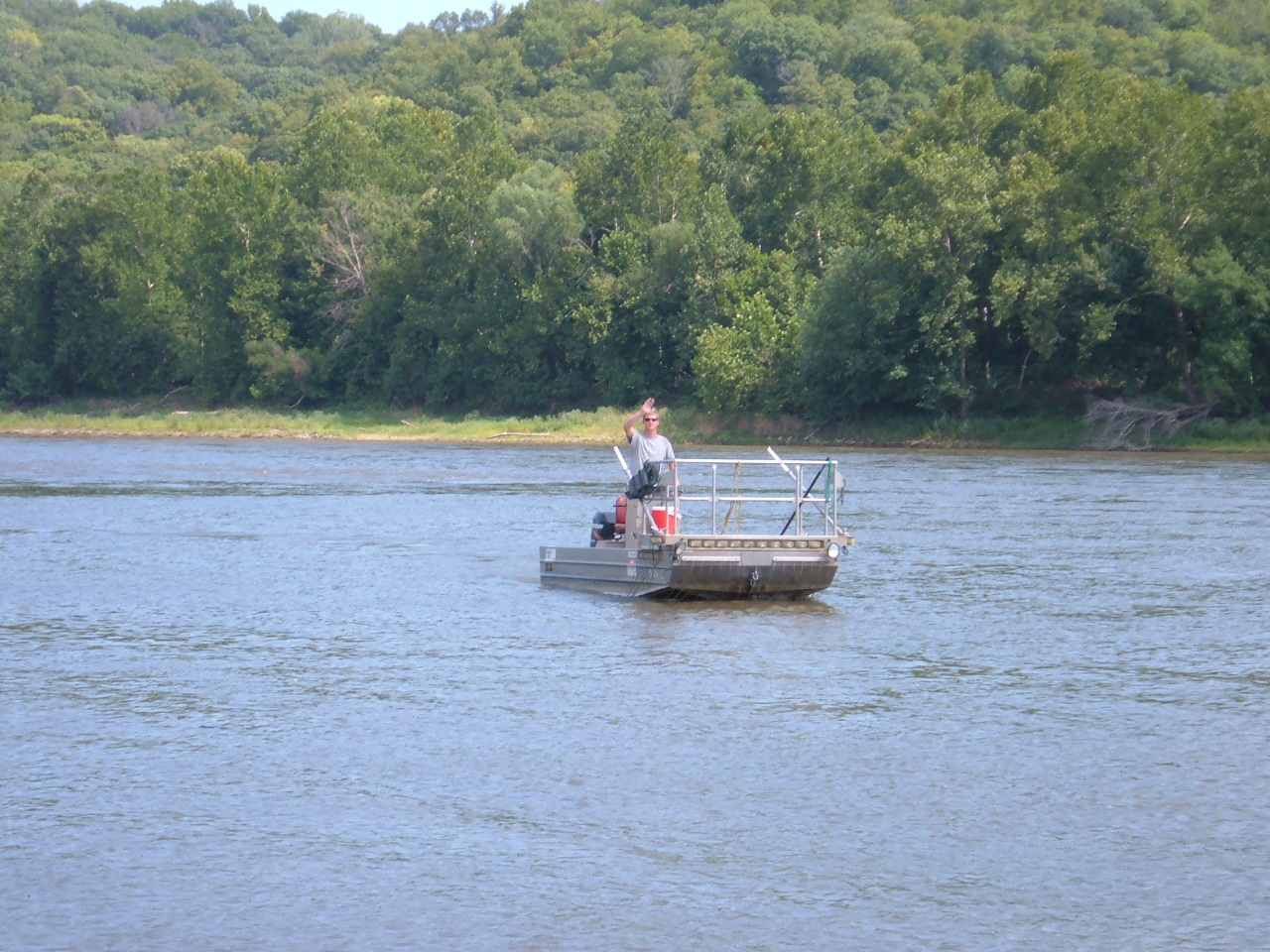Start Date: 2006
End Date: 2008
Full Citation:
U.S. Environmental Protection Agency, $98,000, 2006–2008. Procurement of field and analytical support for the EMAP-Great Rivers on the Missouri River. PI: D. Huggins, Co-PIs: D. Dzialowski, D. Baker, J. Thorp.
Category:
- Aquatic
Associated with the KU Field Station: No
Research Summary:
The Great Rivers of North America, including the Mississippi, Missouri, and Ohio Rivers, account for a large proportion of the available water resources within the United States and are disproportionately impaired. Nonpoint source pollution from agriculture, alterations of hydrological patterns, reductions in floodplain quality and quantity, and invasive species are some of the many disturbances that threaten the integrity of Great River Ecosystems (GRE) (Benke, 1990; Karr and Chu, 2000; Justic et al., 2003). Relative to other aquatic habitats such as wadeable steams and lakes, limited effort has been directed towards the development of bioassessment tools for great rivers. Consequently, effective bioassessment tools must first be developed and demonstrated for these important ecosystems before local, regional, or national assessment programs can be designed and implemented (McDonald et al., 2004).
To assist with this effort, the Central Plains Center for BioAssessment (CPCB) sampled 8 Lower Missouri River reference sites using Environmental Monitoring and Assessment Program – Great River Ecosystems (EMAP-GRE) protocols (Angradi et al. 2006). From a 500-m reach at each site we measured habitat parameters and collected water chemistry, sediment, periphyton, and macroinvertebrates, and fish, and continued to collect fish at an additional 500-m reach.
Additional Macroinvertebrate Collections
We also collected and identified macroinvertebrate for a special study within this project. The current EMAP-GRE protocols include sampling macroinvertebrates in two habitats using two methodologies: 1) near-shore littoral areas with a kick net and 2) main channel snags by boat with a modified kick net (Angradi et al., 2006). In order to compare variability in samples collected using these two methodologies the CPCB collected additional samples at each site after the completion of all littoral GRE-EMAP sampling procedures.
Final report - Baker, D.S. and D.G. Huggins. 2010. Comparison of snag and shoreline macroinvertebrate samples - A bioassessment of the Missouri River. Open-file Report No. 161. Kansas Biological Survey, Lawrence, KS. 16 pp.
Images:

